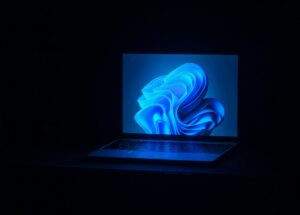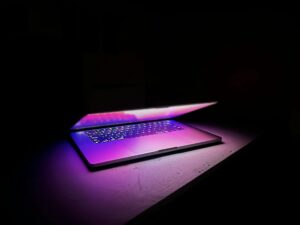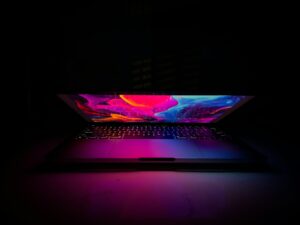Advice on How to Extend the Life of Your Laptop Battery

Advice on How to Extend the Life of Your Laptop Battery
The mobility of a laptop is one of the most significant benefits that it offers to a lot of individuals. On the other hand, battery life often becomes the limiting factor, particularly while working while on the go or traveling without access to power outlets. Despite the fact that battery technology has advanced over the years, just a few easy routines and modifications to the settings may substantially prolong the amount of time that your device can go without needing to be charged. The most efficient use of each charge may be achieved by optimizing the use of both the software and the hardware.
Why Battery Life Is So Important
The battery life of a laptop is the single most important factor in determining its performance and mobility. Battery life that is extended:
- Allows for continuous periods of creative activity.
- Minimizes reliance on electrical outlets for charging.
- Maintains the battery’s health over the long term.
- This enhances both the ease and productivity of travel.
Utilize the Appropriate Power Mode
Windows-based laptops come with a variety of power modes that strike a balance between performance and battery consumption.
- Click on the symbol that looks like a battery on the taskbar.
- In order to get the best battery life, balanced performance, and best performance, adjust the slider.
- When doing light activities such as surfing or editing documents, choose the option that provides the longest battery life.
- By decreasing the speed of the central processing unit (CPU) and the amount of background activity, this option reduces the amount of power that is used.
Reduce the brightness of the screen.
- There is a significant amount of electricity that is used by the display. By reducing the brightness, the battery life may be greatly extended.
- In order to modify the brightness, press the Win key and the A key simultaneously.
- In order for Windows to automatically decrease the screen when it detects a darker environment, you need enable adaptive brightness.
Take control of the background applications.
Background applications that are not required use up resources.
- In order to deactivate non-essential applications, go to Settings > Apps > Startup.
- Stop any processes that are using up your computer’s central processing unit (CPU) or RAM in the Task Manager.
- By doing so, your laptop will only be able to concentrate on active activities.
- When they are not required, turn off all wireless connections.
- Even when they are not being used, mobile hotspots, Bluetooth, and Wi-Fi all drain energy.
- To disable Bluetooth while it is not being used, utilize the Quick Settings menu.
Wi-Fi should be turned off while working offline.
If you do not need any kind of wireless connectivity, you should use the airplane mode.
- Make use of the Low-Power Mode.
- One of the features that comes standard with Windows is a battery saver.
- Go to Settings > System > Power & Battery and click on it.
When your battery is low, turn on the battery saving feature.
In order to make the most of the power that is still available, it restricts system performance, alerts, and background activities.
- To adjust the settings for sleep and screen timeout,
- Put a stop to the unneeded draining of your laptop’s battery while it is not in use.
- To adjust the screen and sleep settings, go to Settings > System > Power & Battery > Screen and sleep.
- When the device is not being used, reduce the amount of time that the screen is off and the amount of time that it sleeps.
- This guarantees that your laptop enters low-power mode as rapidly as possible while it is not being used.
Remove Superfluous Peripherals from the System
USB drives, external hard disks, and wireless dongles are examples of devices that drain power when they are used externally. In order to save battery life, disconnect them when they are not required.
- Maintain an up-to-date Software and Drivers
- System upgrades often result in an improvement in battery efficiency.
- Install the most recent updates for Windows.
- Maintaining up-to-date graphics and chipset drivers is essential for achieving optimal power management.
Take away the visual effects.
- The visual effects in Windows have a nice appearance, but they may need more power.
- Open Performance Options by pressing Win and R simultaneously, then typing sysdm.cpl.
- Opt for Adjust to achieve optimal speed, or deactivate animations that are not absolutely necessary to maintain the clarity of the text.
- This lessens the demand on the graphics processor, which in turn extends the life of the battery.
- Hibernation should be used during extended breaks rather than sleep.
The power consumption of sleep mode is still there, but hibernation saves everything to the disk and totally shuts down the system. If you want to conserve more energy, pick Hibernate rather than Sleep while you are taking longer pauses.
- Make Sure Your Laptop Is Cool,
- A battery’s efficiency and longevity are both diminished by heat.
- Laptops should not be used on soft surfaces since they might obstruct airflow.
- On a regular basis, clean vents to prevent dust from accumulating.
If necessary, make use of a cooling pad.
- Tips for the Long-Term Maintenance of Batteries
- The maintenance of the battery over the long term assures that it will continue to function for years without suffering major capacity loss. Extending the daily use is crucial.
- Take care not to leave the laptop plugged in at full charge for a lengthy amount of time.
- Ensure that the battery is not allowed to run down fully on a consistent basis.
- If you are not going to be using the laptop for an extended period of time, you should store it at around fifty percent of its full charge.
It is necessary to have a mix of smart use habits and the appropriate system settings in order to extend the battery life of a laptop. It is possible to guarantee that your laptop will last longer on a single charge and maintain healthy performance over time by reducing the brightness of the screen, regulating the applications that run in the background, activating the Battery saving feature, and practicing excellent long-term battery care. You will be able to maintain the dependability of your device by making these settings, regardless of whether you are working remotely, traveling, or just away from a power outlet.




